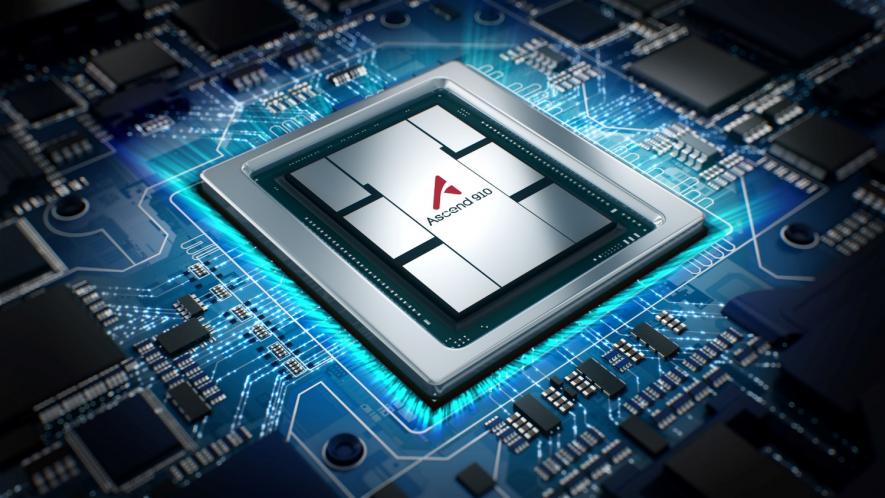Chip War: Can US Really Gain from China's Pain?

With the US imposing technology sanctions on China, the world's electronics industry is facing turbulent times. After the sanctions, Huawei has slipped from its number one slot as a mobile phone supplier (2nd quarter 2020) to number seven. Commenting on this slide, the Huawei chairman has said that Huawei's battle is for survival right now. On that count, Huawei is not only surviving but doing quite well. It is still the world leader in the telecom equipment market with a hefty 31% share, twice that of its nearest competitors Nokia and Ericsson, and profits of nearly $50 billion in the first six months of 2021. But will it retain its market position without China catching up in chip manufacturing and design technologies?
It is not the Chinese companies alone that face tough times. With growing chip wars between the US and China, the global supply chain for electronic chips has been affected, and chip shortages have emerged. Semiconductor chips enter almost every product, from our lowly household equipment—microwave ovens and toasters—to the most advanced products in the industry. The car industry's biggest bottleneck today is chip shortages, which have badly hit production. If the chip wars continue, the chip shortage crisis can affect other industries.
Is the crisis of the semiconductor industry the precursor to the fragmentation of global supply chains? Will it lead to warring blocks, with the US at one pole and China at the other? With this fragility of the supply chain, are we seeing the end of globalisation as a paradigm?
Chip making and the electronics industry are the most capital and research and development (R&D) intensive industries. No other industry has this characteristic. Power or steel plants are capital intensive; pharmaceuticals are R&D intensive. But not both. A little known Dutch company ASML, which produces the lithographic machines to manufacture chips, is worth more than Volkswagen, the world's largest car manufacturer! It is due to the R&D costs that go into their machines: ASML is the only equipment maker that can deliver the machines that the most advanced chips require. Today, a new fabrication facility to make the new generation of chips costs $20 billion, more than an aircraft carrier or nuclear plant facility. Only two fabricators, TSMC in Taiwan and Samsung, can produce the most advanced chips that the industry uses.
The US and China compete in areas such as artificial intelligence, computers, mobile networks and phones. The basic building block of all of these technologies is the semiconductor chip. The more circuity we can pack into a chip, the more its computing power. The bulk of the market still consists of older fabricators that use 180 nm to 28 nm level technologies. Only 2% of chips--the most advanced chips--are below the 10 nm level. The only fabricators that can make such chips are TSMC and Samsung, the world's largest fabricators. While SMIC of China, the third-largest chip fabricator, is also at the 14 nm level, it only recently moved from 28 nm to 14 nm. With Chinese government support, it is investing in production lines that can go below 14 nm. Intel, once the world leader in chip manufacturing, is stuck at the 14 nm level though it also has plans to develop the next generation of chips.
The US has chosen the electronics/semiconductor industry as a battleground for its geostrategic competition with China. It believes it has a significant technology lead and major market share here. China is a late entrant, and though it has comparable market share, it is still dependent on certain core technologies that the US and its allies—the European Union, Japan and South Korea—control. That is why the US has chosen Huawei and Semiconductor Manufacturing International Corporation (SMIC), two major Chinese players, as its primary targets for sanctions. The US has put 250 Chinese companies on the entities list that will require special licenses to import equipment or components, though it is not a blanket bar.
The US is following up its sanctions on Huawei and SMIC with a plan to bar China from what it calls "foundational technologies" under its 2018 Export Reform Control Act. The argument the US is building is a simple one: we are ahead of China in certain critical technologies required for advanced chip manufacture; all we have to do to maintain our lead is deny China access to these technologies; that will ensure we lead in the future and US dominance.
John Verwey, an analyst who runs a website on semiconductor technology, discusses what a foundational technology is in the electronics industry. At first sight, it might appear that chips should be considered foundational technologies and targets of US sanctions. It is what the US did when it barred Huawei from buying the latest 7 nm scale chips from Taiwan's TSMC, the biggest chip fabricator.
The SMIC then tried to set up a fabrication line for 7nm chips and needed to import Extreme Ultraviolet Lithography (EUV) machines from the Dutch company ASML. Each machine costs around US$ 120-150 million. Though the EUV machines are from the Netherlands, they use software developed in their US subsidiary, and therefore, is under the US sanctions regime.
The US sanctions mean that ASML cannot sell the EUV lithography machines to China although it can sell other lithographic machines for lower-end chip production, keeping China out of the high-end <10 nm technology, and therefore a generation or two behind the market leaders.
It brings us to what is a foundational technology. Clearly, though chips are key drivers of electronics, they are not as foundational as the machines that produce them. To be at the cutting edge of technology, we have to master not only chip production technology but also the technology to produce the machines that run the production lines. That is why ASML's lithography machines are the bottleneck for China.
What then drives the advances in key technologies of these machines and chip production? As Marxists know, it is knowledge that drives productive forces, which in this case is the advances in chip design. This knowledge is captured in the software design tools and lithography machines. They are both highly knowledge-intensive and require people with very specialised skills.
The US and its universities are still the major source of knowledge development, which is key to advancing this sector. But here is its long-term problem. The research programs of US universities are mostly staffed with foreign students, the bulk of them from China, India and other developing countries. A large number of them stay back in the US and provide the human power required for the advances in knowledge that the US has today.
If Chinese students and researchers are not welcome in the US, this source of knowledge development will weaken. Unfortunately, countries like India have not invested in high-quality education and research laboratories to substitute for the stream of Chinese students entering US universities. China has invested heavily in universities and research institutions, overtaking the US to produce many more PhDs in science and technology. It is also building a solid pipeline of innovations from the universities and research institutions to the industry.
In terms of the US semiconductor industry, China is the biggest market for the US for its chip designs and design software. The US companies also design high-end chips, which get manufactured in Taiwan and China. The US sanctions will undoubtedly damage China in advanced chip production and electronic devices based on them in the short run. But it will also mean that the US companies will lose a significant part of revenues from the Chinese market for sales of design tools. It also means a loss of revenue for advanced chips that the US companies like Qualcomm and Nvidia design and then manufacture in Taiwan's TSMC.
For US high-tech companies, the loss of this income means less money for R&D and the slow erosion of its position as the global knowledge hub. If the US companies lose the Chinese market, and therefore a significant part of their revenues, it will seriously impair their ability to compete in the future. They may gain in the short run, as they are with Huawei losing its number one spot in smartphones, but in the long term, the loss of revenues will lower its ability to produce the knowledge that gives it its edge in technology. Less money in research means an eventual loss of leadership because, unlike other countries, the US increasingly does not produce the chips or the machines, but the knowledge that goes into both.
In a series of submissions to the US Department of Commerce, the US semiconductor industry has argued that the US companies delinking from the Chinese market will mean a significant revenue loss and, eventually, the US will give up its leadership in electronics. Already, the US sanctions have led the Chinese companies to take out US-designed components from their product lines. Sanctions, therefore, have not only hit Huawei and other Chinese suppliers but also their US suppliers.
How long will China take to erase the lead of the US and its allies in semiconductor technologies? Analysis Mason, a leading consulting company, says in its May 21 Report that China will attain self-sufficiency in semiconductors in 3-4 years. The Boston Consulting Group and Semiconductor IndustryAssociation have modelled the impact of breaking up the global supply chain of China and the US delinking their supply chain and markets. It predicts that with such a policy, the US would still lose its leadership to China. According to a Semiconductor Industry Association submission to the US Department of Commerce, the only way the US can preserve its lead is if it allows exports to China—except in the military sector—and uses the profits to develop the new generation of technologies. Of course, along with hefty subsidies from the US government!
Where is India in semiconductor manufacturing? India missed the semiconductor bus when it decided not to rebuild the Semiconductor Complex in Mohali that got destroyed in a fire in 1989. Its policymakers decided that India should leverage its strength in software and systems and not worry about manufacturing chips. Vinnie Mehta, formerly the Director of Executive Director of Manufacturers' Association for Information Technology (MAIT), told the Mint newspaper ten years back, "A nation without silicon [technology] is like a person without a heart." That heart is still missing in India's technology ecosystem.
If the US wants to be a world leader, it must match China in investing in knowledge generation for future technologies. So, why is the US taking the sanctions route? Sanctions are simpler to implement. Building a society that values knowledge is much more difficult. That is the crisis of late capitalism
Get the latest reports & analysis with people's perspective on Protests, movements & deep analytical videos, discussions of the current affairs in your Telegram app. Subscribe to NewsClick's Telegram channel & get Real-Time updates on stories, as they get published on our website.
























